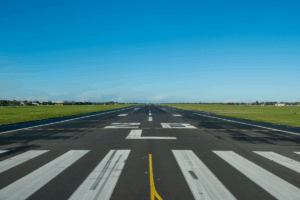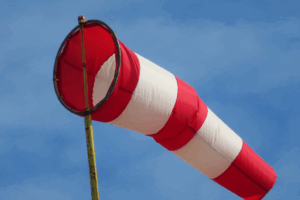无论机场规模、容量或位置如何,跑道安全对于每个机场来说都是不容忽视的。运营效率和成本效益也是机场持续盈利的关键因素。.
但是,如果由于跑道照明设备的老化、退化或过时,其中任何一个要素开始出现问题,那么对旧部件和设备进行改造就会从单纯的维护变成对性能、合规性和长期成本控制的战略性投资。.
哪些迹象表明有必要对传统设备进行改造?
机场跑道灯对于安全、高效地运行至关重要。即使您定期对其进行维护,也总有一天需要对设备进行改造,以保持较高的安全标准。.
以下是一些需要注意的警示信号:
更高的能源消耗
传统设备的耗电量往往远远高于基于 LED 的现代系统,尤其是随着设备的老化,它们需要更加努力地工作才能正常运行。.
横梁变得脆弱
如果老式灯泡的光束减弱,无法穿过地平线,那么飞行员在进场时可能会看不清跑道,尤其是在能见度较低的情况下,如雨、雪、雾或夜间。.
维护需求增加
老式跑道灯,特别是使用金属卤化物灯或白炽灯的跑道灯,会很快烧坏并产生高热,因此技术团队需要更频繁地进行维护。.
零部件越来越难采购
使用了几十年的变速箱、皮带传动装置和其他传统设备越来越难找到,需要花费大量的时间和金钱去采购并运送到您所在的地点。.
忽视这些警示信号可能会导致维护和能源成本增加,超出改装投资,同时还会影响您遵守 FAA 和 ICAO 等管理机构不断变化的标准。.
改造机场跑道遗留设备的 5 个理由
以下是尽早启动改造项目的五大理由:
- 设备寿命更长
使用 LED 技术改造现有灯具系统,可将其使用寿命延长至 50,000 小时或更长,是传统灯具的数倍。寿命长意味着更换灯泡的次数更少,系统停机维护的时间更短,而且随着时间的推移,更换成本也会大大降低。.
- 更高的能源效率
传统灯具的耗电量比 LED 系统高出 70%,严重影响运营预算。随着时间的推移,LED 的改造成本会逐渐降低,尤其是在机场内有成千上万盏灯的情况下。此外,由于 LED 比白炽灯释放的热能更少,因此发热量更低,从而减轻了电气元件和电缆绝缘的负担。.
- 任何条件下的可靠性
传统的卤素灯或白炽灯系统容易出现灯丝故障和光度衰减,尤其是在极端天气或高振动环境下。相比之下,LED 灯具可在较大的工作范围内提供稳定的输出和色彩表现。此外,现代 LED 照明装置还能提供强大的浪涌保护和密封外壳,以抵御潮湿、化学品和跑道除冰剂的侵袭,从而提高飞行员、地勤人员和塔台人员使用的可靠性。.
- 与现代控制系统轻松集成
将传统系统与现代机场技术(如机场照明控制和监测系统 (ALCMS))相集成是一项挑战。使用 LED 进行改造后,您就可以采用 ALCMS,它可以根据能见度条件或空中交通要求自动调节跑道 LED 灯泡的亮度。基于 LED 的系统还可与自动地表探测设备 (ASDE) 无缝集成,使地面照明能够对机场上的飞机或车辆移动做出智能响应。.
阅读更多 利用远程监控解决方案改善机场运营
- 使您符合国际民航组织和美国联邦航空局的标准
将照明系统升级为具有更严格的光度性能、更好的色彩均匀性和更高的环境密封性的技术,是相关管理机构进行认证和检查的关键因素。.
阅读更多 机场照明和供电设备的合规性和标准化
开始设定机场安全和效率标准
我们的团队认为,机场照明改造与其说是一项成本,不如说是一项节能投资。随着航空交通量的增加和监管要求的提高,继续依赖老化照明基础设施的机场将面临越来越多的挑战,而且随着时间的推移,这些挑战会变得越来越难以克服。.
因此,对于希望利用先进的 LED 技术为未来基础设施做好准备的机场运营商来说,改装是一项明智的策略,既能节省资金,提高利润,又能支持扩展机会。.
当您准备升级跑道照明和电气设备时,请致电 Airport Lighting Company 专家,我们将为您提供可靠的定制建议、高品质的组件和卓越的客户服务。.
致电机场照明 最新机场照明技术公司
Airport Lighting Company 团队是 随时准备回答您的问题 了解我们的技术产品如何帮助您提高跑道的安全性、可靠性和效率。请致电 315-682-6460,我们将为您提供快速、友好的服务。


